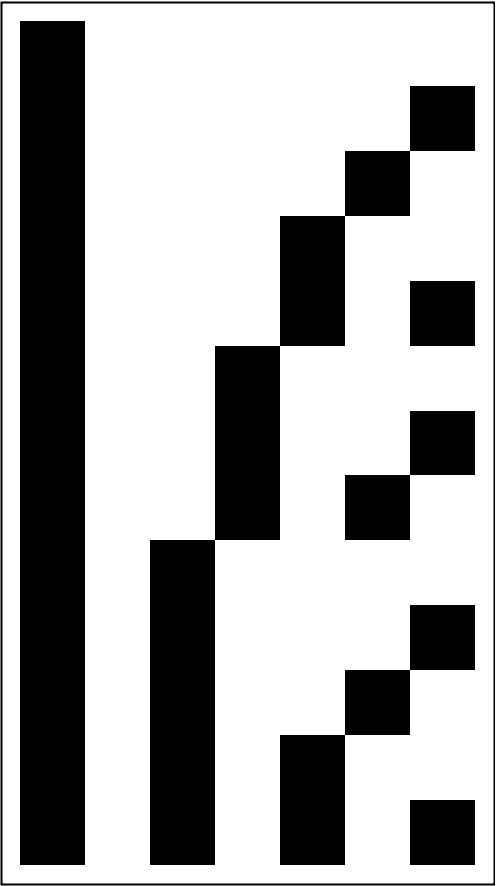Wolfram Function Repository
Instant-use add-on functions for the Wolfram Language
Function Repository Resource:
Give the 0–1 list that indicates the unique nonconsecutive Fibonacci numbers that sum to the non-negative integer input
ResourceFunction["ZeckendorfRepresentation"][n] gives the 0–1 list that indicates the unique nonconsecutive Fibonacci numbers that sum to the non-negative integer n. |
The first number whose representation takes three summands is 12:
| In[1]:= |
| Out[1]= |
This corresponds to 8 + 3 + 1:
| In[2]:= |
| Out[2]= |
The first number whose representation takes four summands is 33:
| In[3]:= |
| Out[3]= |
| In[4]:= | ![With[{z = ResourceFunction["ZeckendorfRepresentation"][33]}, Prepend[Reverse@z, 0] . Fibonacci@Range[1 + Length@z]]](https://www.wolframcloud.com/obj/resourcesystem/images/8d0/8d0519f6-7ab6-4894-8b06-8aeff7b2301a/4df6f74eb18b8e16.png) |
| Out[4]= |
| In[5]:= |
| Out[5]= |
There are Fk Zeckendorf representations of length k; for example, here are the 13 representations of length 7:
| In[6]:= |
| Out[6]= |  |
This visualizes the same pattern:
| In[7]:= |
| Out[7]= |  |
Wolfram Language 11.3 (March 2018) or above
This work is licensed under a Creative Commons Attribution 4.0 International License